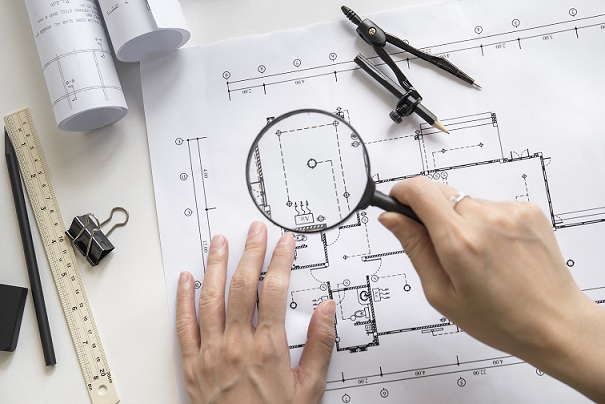Casting is a process – where metal is heated and poured into the desired mold to get the desired product.
In the Engineering Industry – Casting products are wildly used in various industries i.e Automobile, including Marine, Electrical Equipment, Water supply and sewage, Construction Equipment, Engineering Equipment, Machinery & Equipment, etc, and many more.
So based on wide application and use the castings products are most in demand of high reliability and quality.
There are many Third-Party Inspection Agency in India (i.e OSS Certification ) that provide Third-Party Inspection services on Casting products – So in view to further strengthen the knowledge of the Inspecting officer – which could help the inspecting officer to apply before taking the Third-Party Inspection projects of Casting products – Which could help them to enhance the inspection.
What are points considered during the casting product inspection the inspector should know?
Before the physical inspection starts the Inspector needs to know what the requirements of the inspection are to be performed.
- The inspector needs to know the method of inspection such as dimensional, visual, performance, stuffing, etc.
- Calibration certificates and instrument conditions
- Firstly the document verification needs to be done.
- Raw material test reports need to be reviewed for acceptance.
- Internal factory test report verification
- Quantity Verification
- Visual Inspection
- Dimensional Inspection
- Performance Monitoring
For Physical inspection, the Inspector needs to have certain knowledge regarding the product.
Knowledge of types of Castings
- Sand Casting
- Shell Molding
- Investment Casting
- Centrifugal Casting
- Permanent mold casting
- Die Casting
The process involved in castings.
- Send Loading
- Sand Shooting
- Blowing
- Mold-making
- Camping
- Pouring
- Cooling
- Removal
- Trimming
Types of castings defects inspector may find during the course of the inspection.
- Surface defects – porosity, scratches, dents or holes, orange peel, paint runs, blisters, debris contamination
- Color inconsistency – color match between two parts, shades, spotting, uneven surface, surface finish thickness, the color match against master sample or reference data (RAL or Pantone)
- Burns – black specs and marks on the surface of the part due to overheating during the production process
- Flow marks – wavy or streaked appearance on the product surface (molded and cast parts)
- Haze – cloudiness on clear transparent parts
- Sink marks – depression on the surface of the product (molded and cast parts)
- Knit or weld lines – this is a visible line created at the intersection of the melt fronts meeting and trying to merge together (molded and cast parts)
- Flash – excess material at the parting line of a molding or cast part
- Texture – variation across the same part and between different parts of the same batch
Knowledge regarding the types of testing in casting products.
- Visual Inspection
- Hydrostatic Pressure Test
- Magnetic Particle Inspection
- Radiographic Examination
- Ultrasonic Inspection
- Coin Testing
- Dye (Liquid ) Penetrate Testing
- Pressure Leak Testing
- Eddy Current Inspection
- Magnetic Particle Inspection
- Yield Strength
- Hardness
- Ductile
- Brittle Transition Temperature
- Environmental Test
Types of IS standards applicable to Casting Products
- IS 1030 Carbon steel castings for general-purpose engineering
- IS 210(2009) Grey iron castings
- IS 276 Austenitic Manganese steel
- IS 4897 Deviations on un-tolerance dimensions and mass of steel castings
- IS 11166 Permissible deviations on dimensions, surface roughness, and mass of steel castings made with the investment casting process.
Types of products manufactured by casting Process.
- Machinery Bodies
- Historic markers and plaques
- Hardware: hinges, latches
- Columns, Balusters
- Stairs
- Structural connectors in buildings and monuments
- Decorative Features
- Fences
- Tools And Utensils
- Ordinance
- Stoves and firebacks
- Piping
Knowledge of measuring and Testing Equipment for casting products
- compression strength testing machine.
- Moister tester.
- Permeability meter.
- Compatibility meter.
- Sieve Analyzer.
- Mold hardens tester.
- Core Tester.
- Universal Strength.
- Sand Rammer
- Permeability
- Sand Sieve
- Electric Permeability
- Shell Tensile Tester
- NDT Testing
- Hardness Tester
- Roughness Tester
- Micrometer
- Vernier
- Height Gauge
- Profile Projector
Measuring and Testing Equipment Conditions
While Start of the Third-Party Inspection, the Inspecting offices must check the Followings
- ZERO error in Equipment
- Calibration Status
- Conditions of Equipment
- Environmental Condition
Witnessing of Test
During the Witnessing of the Test, The Inspecting officer must Check the Followings
- Competency of the person performing the Test
- Sample Preparation
- Function and Condition of Testing Equipment along with Calibration Status
- Reliability of out-put of Results
Apart from the above-explained casting inspection requirement, the Inspecting officer must refer to the customer requirement – which may have some additional specific requirements – which could be stated in – QAP / Engineering Drawing / Inspection instruction, etc – must be considered in the process of Inspection.
